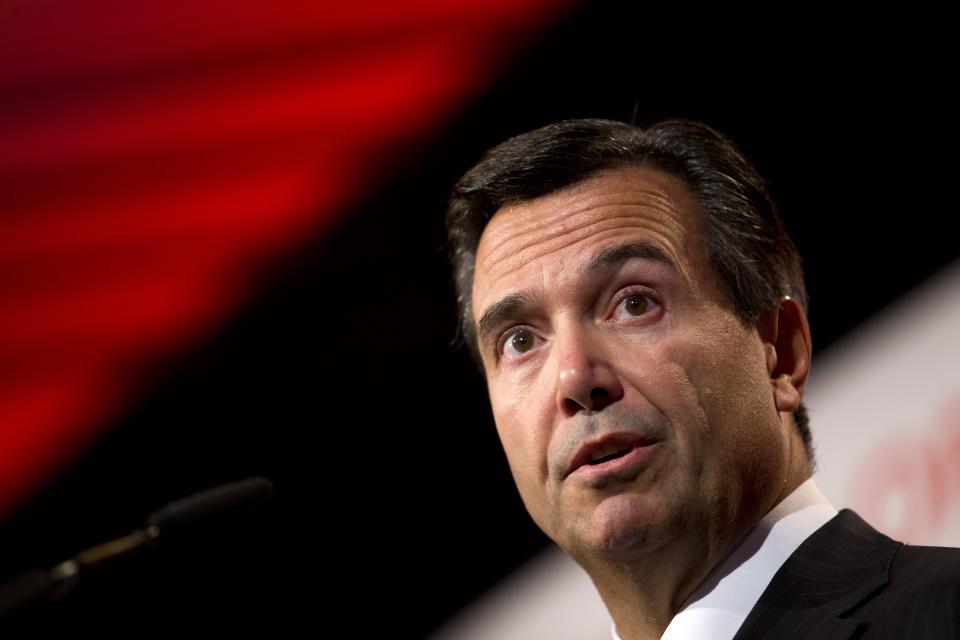Lloyds was 'three months away from running out of money' in crisis, CEO says

Lloyds Bank (LLOY.L) came close to running out of money in 2011 as it struggled to recover from the financial crisis, its CEO has said.
“When I joined the bank as chief executive in 2011, it would not be an understatement to say the bank was on its knees,” Lloyds CEO Antonio Horta-Osorio said in a speech on Monday.
“Everybody remember the post-financial crash note from Treasury secretary Liam Byrne to his successor: ‘I am afraid there is no money’.
“Well, in 2011 we were in a similar situation — three months away from running out of money, sitting on a bloated cost base, and with £200bn of toxic assets on the balance sheet.”
Lloyds, which received £20.3bn government bailout in 2008, lost £3.5bn in 2011 as the bank struggled to recover from the aftermath of the 2008 financial crisis and took large charges related to PPI mis-selling. Horta-Osorio announced a £1.5bn cost cutting plan shortly after taking charge of the bank in March 2011. That plan included 15,000 job cuts, on top of over 25,000 already made in the wake of the financial crisis.
Horta-Osorio said the first six years in charge of Lloyds were “extremely difficult for our colleagues.”
“It was a period of huge change, regular restructuring, and frequent uncertainty,” he said on Monday. “Our job throughout was to lead them with clarity of purpose and vision, making sure that they knew exactly what we were doing and why we were doing it.
“When the building is on fire, you have to tell people what to do not to debate whether that is the case.”
The bank boss said Lloyds was now “now operating from a position of profitability and strength” but facing “unprecedented levels of change” due to technology, political uncertainty, and changing customer habits.
“It is our responsibility to take action and proactively prepare people for the future,” Horta-Osorio said. He said Lloyds current digital transformation strategy, launched in 2018, was focused on training staff to have the flexibility and skills to deal with the fast-changing world.
“Machines should do the ordinary to allow people to do the extraordinary,” he said.
Horta-Osorio also said employers have “a duty of care” when it comes to staff mental health. The Portuguese banker was signed off work with stress for a month in late 2011, shortly after he took over the bank.
Horta-Osorio’s comments came during a keynote address at the SIBOS conference in London, a gathering of over 11,000 bankers from around the world focusing on payments. Horta-Osorio also emphasises the work Lloyds is doing on diversity and inclusion.

 Yahoo Finance
Yahoo Finance